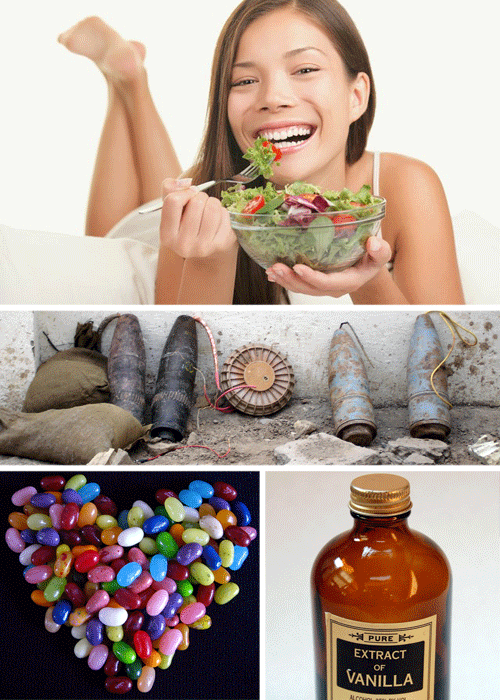It’s tempting to assume that in the back of every Wal-Mart (and some of the seedier Targets) there’s a machine that combines obscure, sterile chemicals and a dash of cancer into everything the modern human needs. Looking at the ingredient list of just about any processed food certainly gives that impression. The truth is some really weird things ended up in your daily life for some incredibly bizarre reasons.
Denim

In the short list of things indelibly American, a pair of denim jeans ranks right up there with Grandma’s Apple pie and starting wars in countries with unpronounceable names. Is there anything more iconic in American culture than the denim-clad cowboy slowly smoking a Marlboro while contemplating what a rogue he is and how he just needs a woman to change him? Well the ugly truth is…
Actually, they’re from France.
Denim is actually a bastardization of De Nimes, meaning essentially “This is from that country that symbolizes everything real Americans hate“. Though it might seem like it, denim jeans aren’t made of any special quasi-kevlar material, they’re just a specific cotton weave that was developed by some industrious Frenchmen in the 18th century. Though they were invented elsewhere, Americans can take comfort in the fact that, like the automobile, we were the ones who made them cool.
Red Bull

Commonly known as the pick me up second only to coffee and that thing you get wasted on second to alcohol, Red Bull has quickly become a staple among bar-goers and exhausted college students world-wide. The drink was originally discovered when an Austrian entrepreneur noticed that a drink called Krating Daeng helped cure his jetlag while visiting Thailand. It was quickly integrated into his beverage company’s line and the rest is history. Which is funny because…
Actually, the energy kick comes from cow bile.
If you pick up the can of Red Bull that you, internet user, most likely have lying around somewhere, you’ll notice that one of the ingredients is something called “Taurine”. This very appropriately named compound is derived from the bile of cows, and, like caffeine, is a naturally-occurring stimulant in mammals. If this fact grosses you out, take comfort in the fact that nowadays taurine shows up in just about every energy drink on the market.
Salad Dressing

What is a salad if not an excuse to consume copious amounts of mayonnaise disguised as “dressing”? Everything looks healthier when it’s slathered on some iceberg lettuce, and a straight helping of pure animal fats and vegetable oil is no different. Well it’s a good thing that dressing doesn’t get more disgusting than that because then we would never go anywhere near leafy greens. Oh wait except it totally gets more disgusting than that because…
Actually, it’s made from putrid, decaying slime.
Imagine you left a pile of vegetables to rot in the hot, humid sun for a couple of days. Can you picture the thin layer of slime that’s formed like a perverse glaze as they degrade? That’s Xantham Gum, also known by the completely inedible description of “bacterial coat”. Apart from showing up in practically everything, it’s a common ingredient in salad dressing. Its unique chemical properties make it a perfect additive to anything that needs to be thick, creamy and oily. Don’t hurt yourself thinking about jokes related to that sentence.
Cheese

Throughout all of history, one thing has been certain: life is undoubtedly improved by a double bacon cheeseburger. There are few ingredients in the culinary repertoire that can increase the calorie count deliciousness of a meal quite like a good slice of cheese. Light and sharp or heavy and smelling like armpits, nothing bitch slaps the palate like a good piece of cheese. Which is an appropriately metal description since cheese is…
Actually made from ground up stomach of the animal they took the milk from.
As a milk derivative, cheese is beholden to the speed of chemical reactions. And in the world of chemical reactions, enzymes are the angry drug dealers that break down your door, sleep with you wife, and make a mess of your pots and pans. Specifically, an enzyme known as Rennet is used to turn thin, watery milk into the badass tongue-curb-stomping-cheese that it was always meant to be. Rennet occurs naturally in the stomachs of cows and other mammals, so, according to the brutalistic rules of cheese crafting, their stomachs are ground up and mixed with milk to produce a variety of cheeses. There are a handful of cheeses produced with artificial substitutes of rennet, but connoisseurs conclude that such cheeses are usually sub-par in taste and “kind of pussy, come on guys”.
Kotex
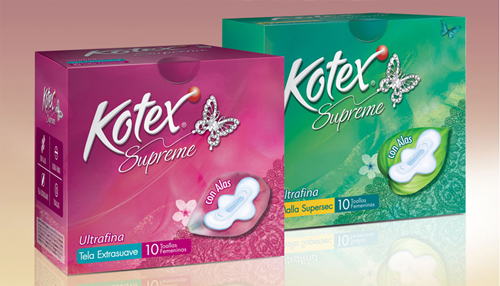
Kotex is well-known today as a popular line of feminine products including pads, tampons, and other euphemistically titled “Period Protection” devices. Kotex was actually one of the first widely advertised and distributed pads in history, back when they were made with wood pulp. After a pause to allow all the women reading this to shudder, we can continue with their even more cringe-inducing origin.
Actually, they were originally used to treat horrible, disfiguring wounds in WWI
Before World War I, Kotex had nothing to do with women’s hygiene. All they did was make bandages. With the war ending and the 17-35 with-gaping-wounds demographic began to dry up, Kotex began to look elsewhere to sell their absorbent bandages. The truly disturbing part about all of this isn’t that MaxiPads were once used as actual bandages, but that someone saw a gushing, bloody stump on the battlefield and thought to himself “Now what does that remind me of…”
Twinkies

You read Twinkies up there and are now silently praying that these delicious golden treats aren’t ruined for the rest of your life. Well the dastardly truth is that Twinkies don’t actually contain any dairy products. Isn’t it weird that one of the items most closely associated with the phrase “cream filling” in American culture doesn’t have a drop of milk? Just kidding.
Actually, they’ve got a heaping helping of Beef Fat.
The problem with the American palate is that we want it all. Every dish needs a heaping helping of the essential vitamins and minerals that matter: fat, salt, and sugar. It’s hard to blame Hostess for this decision, after all it’s that hint of savoriness, or umami that makes Twinkies the object of nearly every post-apocalyptic toil.
Graham Crackers

Some remember Graham Crackers as the heavenly container of s’mores, some remember them as a crappy excuse for a cookie in kindergarten. Graham Crackers have a long and storied history, and date back to the invention of another staple: Kellog’s famous corn flakes. That’s because Kellogg and Graham were contemporaries who both subscribed to the idea that bland foods were inherently healthy. And not just that…
Actually, they were designed to limit the eater’s sex drive.
Dr. Graham was an adamant activist against masturbation, and believed that lustful urges were at the base of most health problems. Graham crackers were supposed to be so bland that they would bland-up the whole of the consumer’s personality, including sex drive. The modern version of the cracker is made with bleached, refined flour and heaping helpings of sugar and cinnamon—all things Graham would have detested for their tendency to make couples want to have sex outside of a hole in the sheet. Knowing that these crackers were intentionally designed to hold back sexual urges puts a new spin on the fact that they’re commonly given to young children.
Jelly Beans
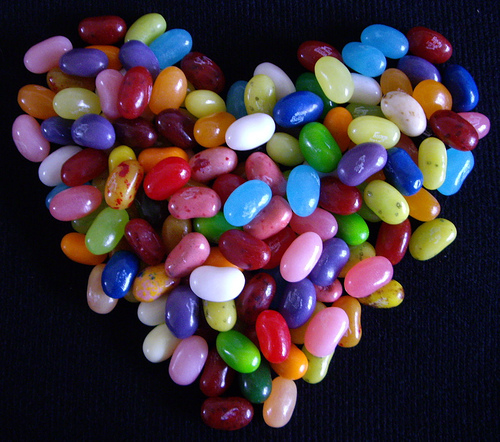
Contrary to the presumably sex-killing properties of Graham crackers, urban legend fanatics have been scarfing down green jelly beans for decades. For whatever reason, it is believed that the color green is an aphrodisiac, a belief stretching back hundreds of years. Which is funny because you probably won’t be so aroused when you find out they’re…
Actually made from crushed Lac Bugs.
Oh come on, you knew the “crushed up bugs” entry was coming sooner or later, and the bug juice at camp was a low-hanging fruit. The shellac is what gives jelly beans that shiny, crispy outer shell. Well that and enough pure, caramelized sugar to induce diabetic coma. Shellac is also a main ingredient in several varnishes, and pretty much anything that has a smooth, shiny coat to it. Shellac was used for paints and varnishes long before it ever ended up in candy, so one has to wonder who it was that said “Let’s crush some paint chips and throw them into children’s candy”.
IEDs

The infamous IED has become the notorious tool of insurgents, terrorists and other nice folk you see in church on Sunday. Many are composed of Urea Nitrate, which is almost as destructive as the more commonly employed Ammonium Nitrate, but much easier to obtain the ingredients for. You would think that there would be wide-spread efforts to limit the constituent ingredients in Urea Nitrate, except…
Actually, it’s made from piss.
Urea is a chemical that occurs naturally in human urine. Combine distilled urea with a powerful fertilizer (the nitrate in the name) and you get a hefty explosive that’s nearly impossible to prevent people from producing. Take comfort though; this disgusting, explosive additive is only an ingredient in…well pretty much everything.
Vanilla & Raspberry Flavoring

When someone says vanilla or raspberry flavoring, you’re probably thinking of some incredibly artificial compound that emulates the taste of raspberry and vanilla without actually going anywhere near a vanilla bean or a raspberry. For most ingredients that fall under that dubious “artificial flavors” at the end of the Nutrition Facts, you’d be right. But sometimes the flavor comes from what can charitably be termed “natural ingredients” because, you see, your next bottle of raspberry-flavored juice…
Actually is flavored with beaver ass.
Specifically, a pair of glands in a beaver’s anus produce a scent known as castoreum (which is what it will show up as on the label, you’re welcome). This is…extracted and used by companies in a variety of products, no doubt leading to some of the strangest urban legends among beaver kind. But surely it can’t get any worse; surely consuming beaver’s ass in a small handful of products is something we can all live with. Surely there’s nothing disgusting in the food we consider day-to-day staples like bread or your morning bagel?
Bagels
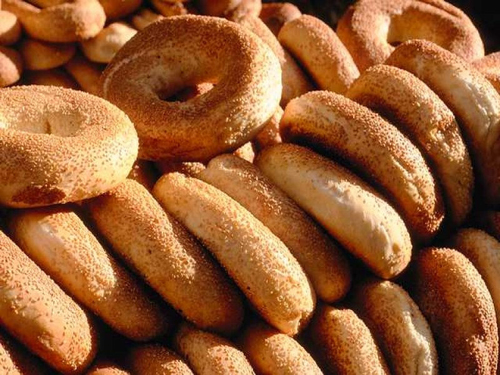
There are few things more wholesome and pure than a loaf of freshly-baked bread. How could something produced since prehistory that has sustained the caloric needs of western society for centuries be perverted? Well history never accounted for baldly opportunistic capitalism and so we’re left with bagels that…
Actually use human hair to stay light and fluffy.
If you’ve ever made bread at home, you know how impossible it is for even a very good chef to create light and fluffy bread with every batch. This is due to the fact that baking is actually an incredibly delicate process that requires just the right amount of ingredients, heat, and time to form an intricate glutamate structure that is the basis for good bread. The density of bagels makes this an even more frustrating process.
When you’re a company that produces millions of loaves each day, this imprecision starts to become a cost concern. Which is how l-cysteine became a common ingredient in mass-produced bread. L-cysteine is a naturally-occurring amino acid that, when added to dough, makes one kick ass loaf. The problem is the most plentiful and cheap source for this protein is human hair, largely sourced from China. Don’t worry though, a substitute has been found recently, so as much as 80% of L-cysteine that you will consume doesn’t come from human hair, your bagel is now produced using 100% duck feathers.
The Bra
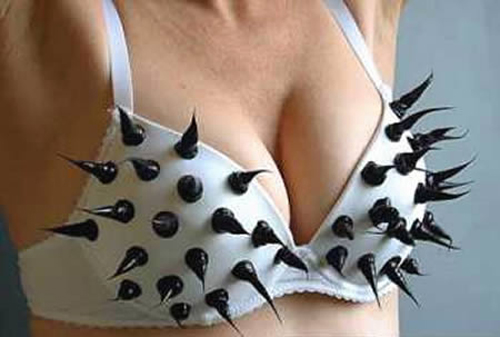
Let’s start out by stating a simple, unequivocal fact: boobs are pretty much 70% of the reason that men choose to continue living. That said, the bra has a tempestuous reputation as a symbol of male dominance, forcing women to wear an uncomfortable piece of clothing simply to allow their breasts to appear more perky and desirable. If a woman chooses not to wear a bra, suddenly she’s a slovenly hippie with no sense of class. Given its history, you’d think the bra was invented by a misogynist intent on the (admittedly noble) goal of making women’s breasts appear more desirable more frequently. But…
Actually, they were originally invented by a woman to liberate women.
Various versions of the bra have, unsurprisingly, popped up all throughout history. But as the Enlightenment waned in Europe, the standard of beauty for women ended up somewhere between Christina Hendricks and…well Christina Hendricks. For most normally-proportioned women, this meant wearing a corset — an incredibly stiff and uncomfortable article of clothing designed to slim the waist, accentuate the breasts, and making normal breathing impossible. In 1910, Mary Phelps Jacob, who was a little too…well endowed to comfortably wear a corset, decided that she’d had enough of these men telling her what to wear, and fashioned what became the first modern bra. The invention took off like wildfire, not because men were particularly enamored by it, (dudes. seriously. have you seen a woman in a corset?) but because women wanted a practical piece of clothing to support their breasts. So the next time someone over an A cup tells you that bras are a symbol of male oppression, ask them how comfortable they are jogging without a sports bra. Then tell them how much you respect women’s liberation. This may or may not end up well.
Fancy Perfume

Back in the days when bathing was infrequent and no one cared how your breath smelled, a person’s stench was largely irrelevant for the unwashed masses. But thanks to hyper-modern innovations like personal hygiene, cleanliness and a sweet-smelling odor has become a premium. Nowadays, almost everyone has a can of Axe or some similarly putrid stench ready to spray on before a date in lieu of a shower. The more refined among us (read: probably no one reading and/or writing this) purchase fancy perfumes to create an illusion of hygiene where one may or may not exist, which is funny because…
Actually, these fancy perfumes used to be made from whale vomit/shit.
For those of you who haven’t read Moby Dick, some strange things happen in the digestive tract of a whale, one of which is the production of a substance known as Ambergris. This waxy substance was, for years, used in the production of the finest perfumes on Earth. Ambergris has been largely replaced with synthetics thanks to those pesky “Not hunting a beast on the brink of extinction” regulations. Though this doesn’t negate the fact that, at some point in history, someone picked up raw ambergris—which smells like feces—and thought “I could make some amazing scents with this”.
Skin Cream
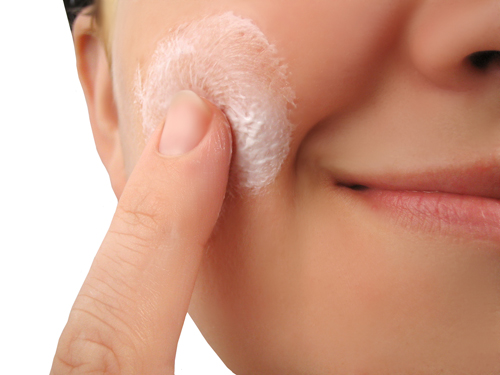
Human skin is a treacherous thing. Especially on the face, it can curse us with acne, chronic dryness, port-wine stains or herpes. When we age, it is one of the earliest and clearest indicators that our physical faculties are declining. Fortunately, there are literally hundreds of companies out there eager to sell you creams that will marginally reduce the aged-ness of your face, salving your mortality through conspicuous consumption. It’s best that you not think too hard about it, or—in case you haven’t learned anything yet—read the ingredients label because…
Actually, a lot of them are made with the oil sheep exude from their pores.
Have you ever not showered for a couple of days? You know how your hair gets oily? Now imagine you didn’t shower for your entire life and constantly grew your hair out several feet. That oily, disgusting sensation you feel right now is caused by lanolin, better known as the crap that accumulates in unwashed hair due to excretions from the sebaceous gland. Sheep, which are bred to do little more than eat, screw, grow hair and never bathe, produce a nauseating amount of this substance. It’s conveniently harvested and resold as a basis for many cosmetic creams, as well as a water-resistant lubricant. Strangely, they are not used in any personal (read: sexual) lubricants, which likely leads to many a lonely sheepherder in Scotland.
Booze

Where would modern society be without booze? It’s difficult to imagine a world where a man or woman can’t come home from a long day’s work and crack open a cold one to relax and unwind. Not to say that booze doesn’t have both a hilarious and tragic downside. In fact, this sinful brew has been recently correlated with increased cancer rates as well as increased calls from your friend to “drink more, you pussy”. With all the debauchery, insanity, and danger surrounding alcohol, it’s difficult to imagine that humans managed to survive this long with it being readily available. The truth is that…
Actually, it was probably a staple food akin to bread.
To clarify, we’re not talking about the 6% ABV craft brews or even watery 3.2% Natty Ice. We’re talking about the earliest fermentations of alcohol, which were likely much smaller in alcohol content. Here’s the thing, a long time ago humans figured out that they could raise grains, and chew these grains raw in order to get nutrients. The problem is, chewing them was a laborious process, so humans invented bread. Now bread, and that other thing we need to survive called water, are very easily turned putrescent by bacteria. Fermenting grain into a bready-water, introduced alcohol—perhaps the world’s first anti-bacterial. Now humans had a meal that was both filling, hydrating, and—most importantly—capable of getting them totally blitzed.
